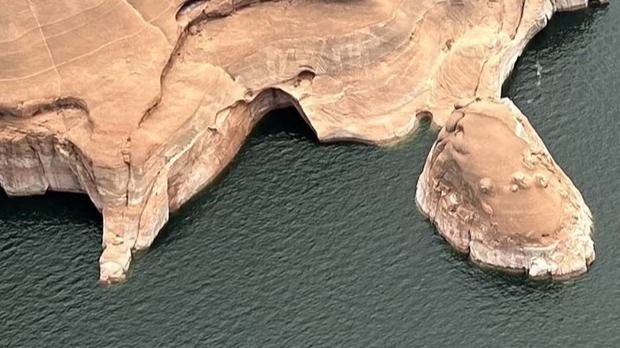The iconic Double Arch, also known as the Toilet Bowl and the Hole in the Roof, collapsed in Utah’s Glen Canyon National Recreation Area on Wednesday. This ancient structure, formed from Navajo sandstone and dating back 190 million years to the late Triassic and early Jurassic periods, has been a major attraction for tourists.
Potential causes and official response
Officials suspect that the collapse of the Double Arch may be linked to changing water levels and erosion from waves in nearby Lake Powell. Michelle Kerns, superintendent of the recreation area, noted that “these features have a lifespan that can be influenced or damaged by manmade interventions.” The sudden fall of such a historic structure raises concerns about the impact of environmental changes on geological formations.
Recent similar incidents
The collapse of the Double Arch follows a recent event in Mexico, where an ancient pyramid at the Ihuatzio Archaeological Zone in Michoacán buckled under intense rainfall. While water levels are believed to have contributed to the Double Arch’s collapse, experts suggest that drought conditions might have caused cracks in the Mexican pyramid. The simultaneous occurrence of these incidents has heightened concerns about environmental impacts on ancient structures.
Supernatural interpretations and tribal concerns
The collapse has also sparked fears among local tribes, particularly the Purépecha people of Michoacán. Tariakuiri Alvarez, a Purépecha spokesperson, described the incident as a “bad omen,” drawing parallels to historical events where similar occurrences were interpreted as displeasure from deities.
Alvarez noted that such events were seen as signals of significant forthcoming events or divine discontent in Purépecha tradition.
Ancient American Geological Formation Collapses in Utah, Tribes Link Fall With ‘Bad Omen’ world-news World News | Latest International News | Global World News | World News Today




